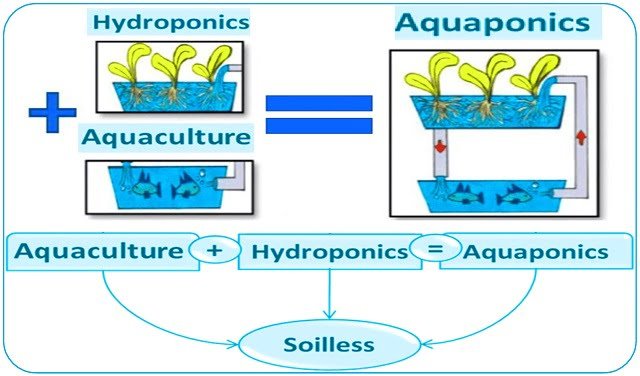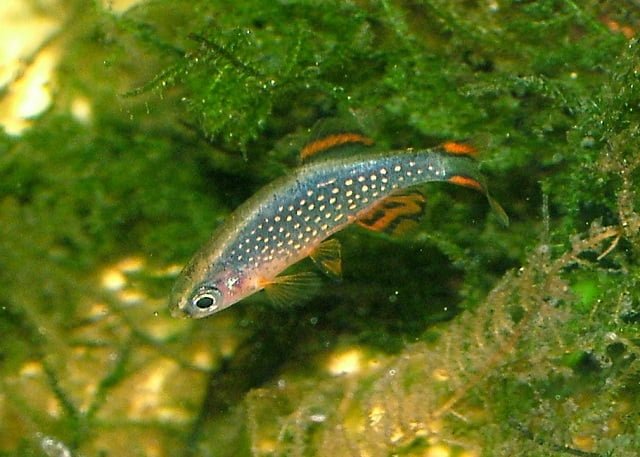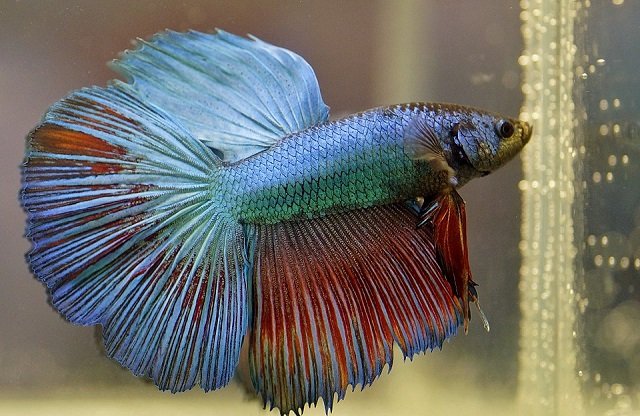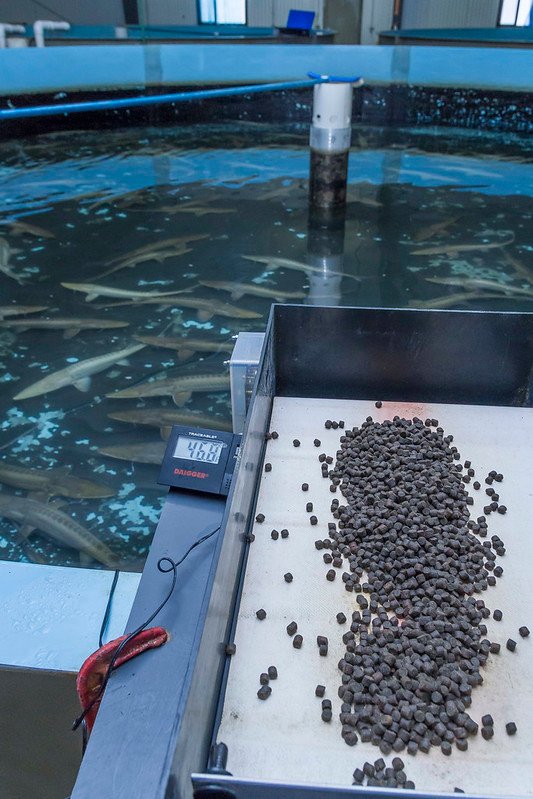
One of the main concerns surrounding aquaculture is the environmental impact of traditional feeding practices. Intensive aquaculture systems rely heavily on formulated feeds, which can lead to excessive accumulation of nutrients and organic matter in the water. Additionally, formulated feeds can be expensive, reducing the profit margins of aquaculture businesses.
This is where a natural solution arises: utilizing the power of natural biota.
Researchers from the Huaiyin Institute of Technology (China), the Institute of Hydrobiology, and the Pearl River Fisheries Research Institute published a scientific review emphasizing the important roles that natural biota (natural food) play in the growth of aquatic animals. They encourage maximizing the utilization of natural biota to improve feed conversion efficiency and the sustainability of aquaculture.
Natural biota: a nutritional powerhouse
The answer lies in an easily accessible resource: natural biota.
Natural biota refers to the diverse range of organisms living within aquaculture ponds. This includes microscopic algae (phytoplankton), tiny animals (zooplankton), bottom-dwelling creatures (zoobenthos), and even bacteria. For many aquatic animals, especially juveniles, natural biota is a preferred and crucial food source, offering a surprising array of benefits.
The study describes the different categories of natural biota present in aquaculture ponds:
- Phytoplankton: Tiny algae that form the base of the aquatic food web. They are packed with essential nutrients such as proteins, vitamins, and fatty acids, promoting healthy growth in fish and shellfish. Common types include diatoms, green algae, and golden algae.
- Bacteria: Although not visible to the naked eye, these microscopic organisms play a vital role. They break down organic matter and make nutrients available to other organisms. Additionally, some bacteria contribute to gut health in farmed animals.
- Zooplankton: Tiny animals that graze on phytoplankton. They are a crucial food source for fish larvae, providing essential nourishment for their early development. Rotifers, copepods, and cladocerans are some of the most common zooplankton found in aquaculture ponds.
- Zoobenthos: Bottom-dwelling creatures such as worms, insects, and mollusks. These organisms can be a valuable food source for larger fish, shrimp, and crabs.
Nutritional powerhouse: a detailed look at each biota group
These organisms offer a wealth of essential nutrients like proteins, lipids, carbohydrates, amino acids, and fatty acids, making them a valuable dietary supplement for farmed aquatic animals.
- Phytoplankton: A rich source of proteins, essential fatty acids like EPA and DHA, and various other nutrients. Their fatty acid profile ensures optimal growth, development, and reproduction of aquatic animals.
- Bacteria: Studies have demonstrated the potential of bacteria to provide essential nutrients like amino acids and fatty acids for various aquatic animals. They also contain beneficial enzymes and trace elements, acting as natural antioxidants and promoting immune health.
- Zooplankton: A reliable source of proteins, essential amino acids, and fatty acids. Rotifers typically have a lower lipid content but offer preferable fatty acid profiles. Copepods boast high protein and lipid content, while cladocerans are notable for containing higher levels of specific fatty acids like ARA and EPA.
- Zoobenthos: These organisms have a nutritional composition similar to zooplankton and are preferred by many larvae. Chironomid larvae, for example, are a good source of proteins, amino acids, and fatty acids. Earthworms, another type of zoobenthos, have been shown to be a promising alternative protein source to fish meal, offering a complete profile of essential amino acids and fatty acids.
Quantifying the nutritional contribution: revealing the numbers
Research is shedding light on the exact contribution of natural biota to the growth of various aquatic animals. Here’s a glimpse at the findings:
Stay Always Informed
Join our communities to instantly receive the most important news, reports, and analysis from the aquaculture industry.
- Stomach content analysis: Studies examining the stomach contents of fish and shrimp reveal that natural biota constitutes a significant portion of their diet for many species. For instance, some juvenile shrimp obtain more than 50% of their nutrition from natural sources within the pond.
- Stable isotope mixing models: These sophisticated techniques allow researchers to quantify the contribution of natural food sources to an animal’s growth. Results indicate that natural biota can significantly (up to 89% in some cases) contribute to the growth of juvenile shrimp.
Benefits for the aquaculture industry
According to the study’s findings, the main benefits for the aquaculture industry include:
- Complete and balanced diet: Natural biota provides a rich mix of proteins, essential fatty acids, vitamins, and minerals – a complete and balanced diet for healthy growth and development. Studies have shown that some fish and shrimp fed natural biota along with formulated feeds exhibit better survival rates and growth performance compared to those on manufactured diets alone.
- Reduced dependence on manufactured feeds: By utilizing natural food sources, aquaculture farms can potentially reduce their reliance on costly commercially produced feeds. This translates to significant cost savings and increased farm profitability.
- Environmentally friendly: Excessive reliance on manufactured feeds can lead to nutrient overload and pollution in aquaculture ponds. Natural biota offers a more sustainable solution, promoting a healthy ecosystem within the pond itself.
Conclusion
According to the study, the future of aquaculture lies in harnessing the power of natural biota along with other innovative techniques. Here are some key areas of focus:
- Development of sustainable practices: Research is underway to create robust and sustainable methods for promoting natural biota within aquaculture ponds, ensuring a consistent food supply for farmed animals.
- Improved feed conversion: The goal is to optimize the use of natural biota alongside formulated feeds, maximizing growth and production while minimizing feed costs.
- Balancing biota and feed inputs: Finding the ideal balance between natural biomass and formulated feeds is crucial for achieving optimal production with minimal environmental impact.
By leveraging the power of natural biota, the aquaculture industry can move towards a more sustainable and profitable future. Unlocking this potential will require further research into the role of natural biota and its integration with other innovative techniques. This paves the way for a future where delicious and healthy seafood production thrives in harmony with the environment.
The study was funded by the National Natural Science Foundation of China, the Natural Science Foundation of the Higher Education Institutions of Jiangsu Province, the Natural Science Research Project of Huaian, the China Agriculture Research System of MOF and MARA, and the National Key Research and Development Program of China and the National Undergraduate Training Program for Innovation.
Contact
Si Luo
Jiangsu Provincial Key Construction Laboratory of Probiotics Preparation, School of Life Science and Food Engineering, Huaiyin Institute of Technology
Huaian 223003, China
Email: luosi@hyit.edu.cn
Reference (open access)
Jin, S., Kong, Q., John, C. K., Wang, Z., Zhang, T., Li, X., Zhu, X., Li, J., Luo, Y., Qian, M., Chen, F., Kong, X., Gu, D., & Luo, S. (2023). Natural Biota’s Contribution to Cultured Aquatic Animals’ Growth in Aquaculture Cannot Be Ignored. Aquaculture Research, 2023(1), 2646607. https://doi.org/10.1155/2023/2646607
Editor at the digital magazine AquaHoy. He holds a degree in Aquaculture Biology from the National University of Santa (UNS) and a Master’s degree in Science and Innovation Management from the Polytechnic University of Valencia, with postgraduate diplomas in Business Innovation and Innovation Management. He possesses extensive experience in the aquaculture and fisheries sector, having led the Fisheries Innovation Unit of the National Program for Innovation in Fisheries and Aquaculture (PNIPA). He has served as a senior consultant in technology watch, an innovation project formulator and advisor, and a lecturer at UNS. He is a member of the Peruvian College of Biologists and was recognized by the World Aquaculture Society (WAS) in 2016 for his contribution to aquaculture.




